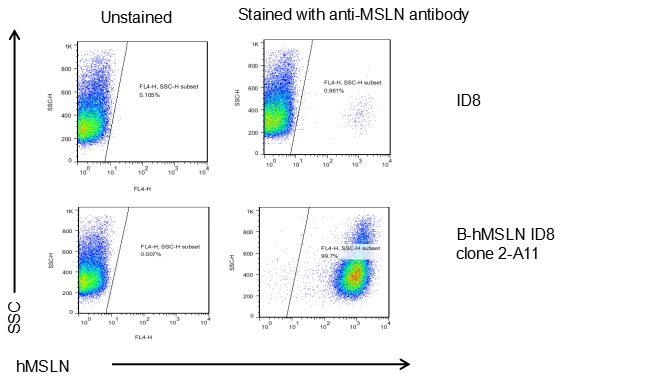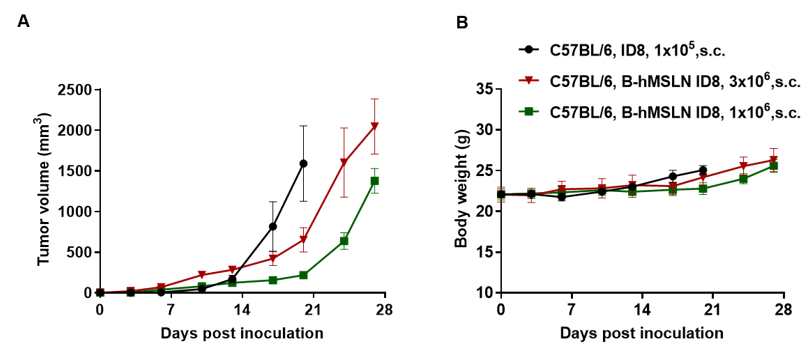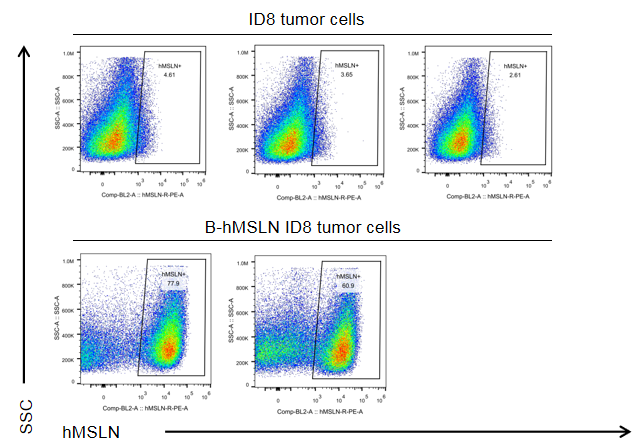B-hMSLN ID8
|
Common name |
B-hMSLN ID8 | Catalog number | 321823 |
| Aliases | MPF, SMRP | Disease | Ovarian Cancer |
|
Organism |
Mouse |
Strain | C57BL/6 |
| Tissue types | Ovary | Tissue | Ovary |

MSLN expression analysis in B-hMSLN ID8 cells by flow cytometry. Single cell suspensions from B-hMSLN ID8 cultures were stained with species-specific anti-MSLN antibody. Human MSLN were detected on the surface of B-hMSLN ID8 cells. The 2-A11 clone of B-hMSLN ID8 cells was used for in vivo experiments.

Subcutaneous homograft tumor growth of B-hMSLN ID8 cells. B-hMSLN ID8 cells (1x106, 3x106) and wild-type ID8 cells (1x105) were subcutaneously implanted into C57BL/6 mice. Tumor volume and body weight were measured twice a week. (A) Average tumor volume ± SEM. (B) Body weight (Mean± SEM). Volume was expressed in mm3 using the formula: V=0.5 × long diameter × short diameter2. As shown in panel A, B-hMSLN ID8 cells were able to establish tumors in vivo and can be used for efficacy studies.

B-hMSLN ID8 cells were subcutaneously transplanted into C57BL/6 mice (n=8). At the end of the experiment, tumor cells were harvested and assessed for human MSLN expression by flow cytometry. As shown, human MSLN was highly expressed on the surface of tumor cells. Therefore, B-hMSLN ID8 cells can be used for in vivo efficacy studies of novel MSLN therapeutics.











 京公网安备: 11011502005564号
京公网安备: 11011502005564号